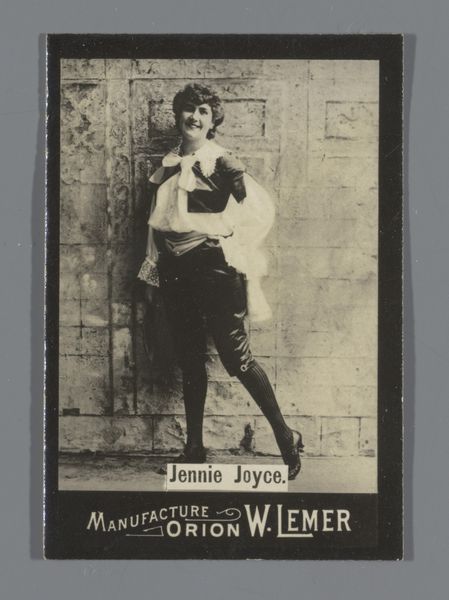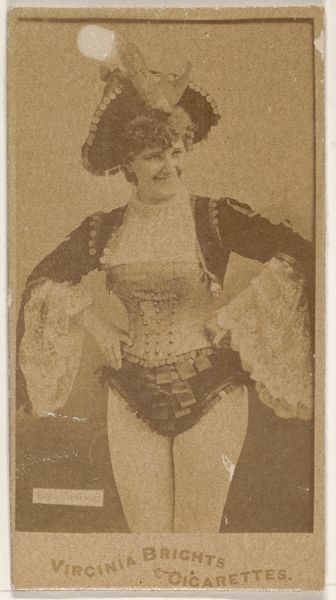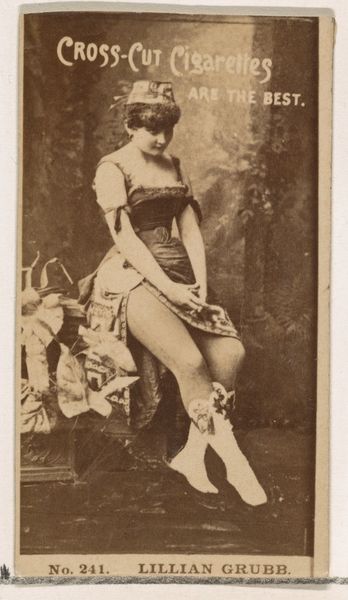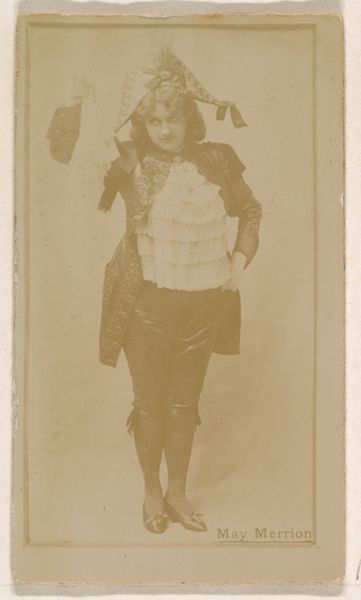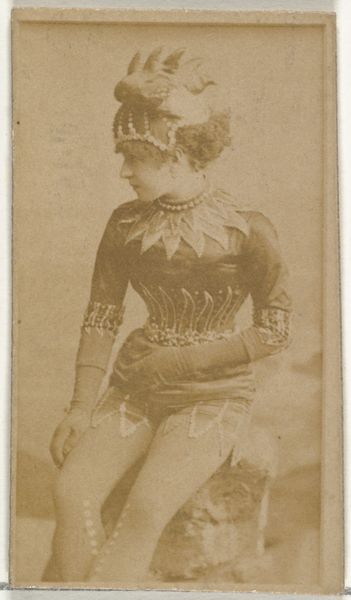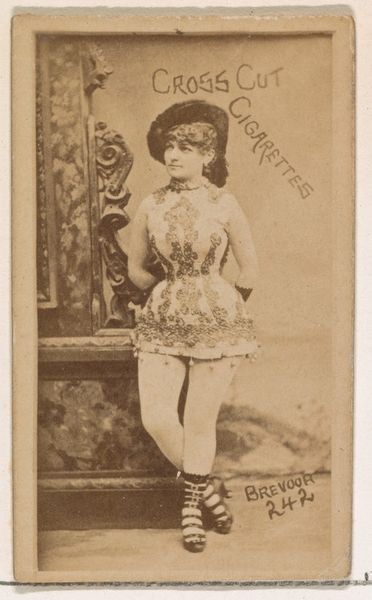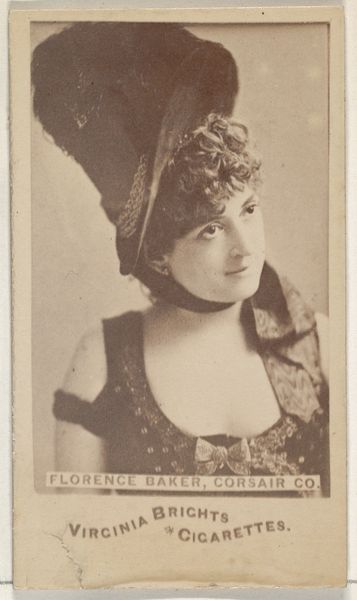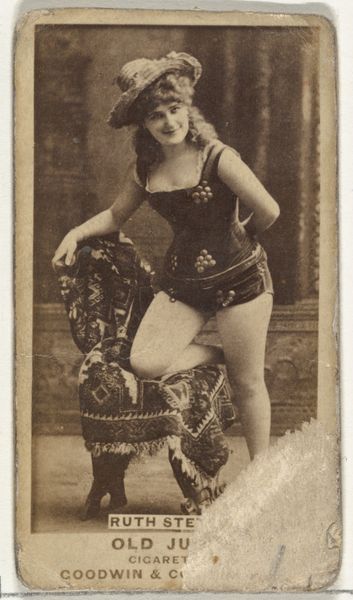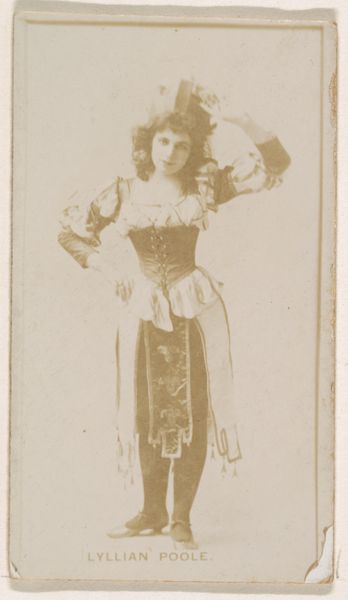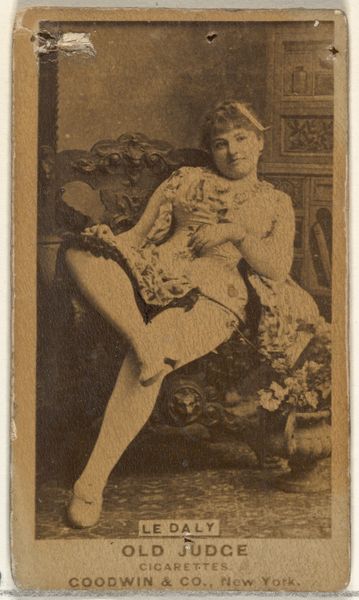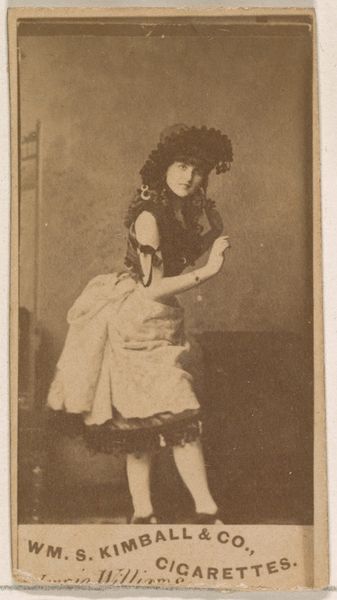
print, photography, gelatin-silver-print
#
portrait
#
still-life-photography
# print
#
fashion mockup
#
photography
#
gelatin-silver-print
#
paper medium
Dimensions: height 59 mm, width 38 mm
Copyright: Rijks Museum: Open Domain
Curator: Let's talk about this evocative photograph titled, "Portrait of Susie Brown with hat and muff, advertising for Orion W. Lemer." It’s a gelatin silver print that likely dates between 1890 and 1900. Editor: There's a definite theatrical quality to it! Almost burlesque, the way she poses with that enormous hat and fur muff, drawing your eye. There's a tension there too between allure and this sort of manufactured elegance, if that makes sense. Curator: Absolutely. It speaks to the aspirations of the era. Consider the hat, practically overflowing with embellishments. It is, itself, symbolic of status and femininity at the time. Susie Brown becomes an emblem—she literally embodies what one might aspire to acquire through the products advertised. The muff, a signal of luxury and warmth against societal pressures perhaps. Editor: It also strikes me how much this image participates in a carefully constructed fantasy. We see Susie Brown presented in a way that elides any traces of her everyday labor, any suggestion of her "real" self. She's a blank canvas for aspiration, made accessible, seemingly, by the advertised product. Do you think the portrait itself reinforces prevailing societal expectations, shaping viewers’ desires in subtle ways? Curator: Undoubtedly. Commercial photography of this era served as a powerful tool in shaping the very concept of idealized womanhood. This echoes far earlier forms of representing ideals that shape culture and perception; however, mass distribution via prints had democratizing potential. Editor: Precisely. By turning a portrait into an advertisement, it implies anyone can become 'Susie Brown’ simply by purchasing an Orion W. Lemer product, or aspires to this manufactured ideal of femininity, if they can afford the product. Where does this position the subject within notions of gender, visibility, and consumption, and perhaps female empowerment in ways too? Curator: This piece opens so many doors! The use of photography democratized portraiture. So while this constructs an image of 'ideal' beauty, there's the underlying message that these goods were attainable by a broader audience than painted portraiture would have ever been. Editor: It is hard to know if a viewer now could truly appreciate what such portrait-advertisements represented during that particular epoch. It all really prompts one to consider how images affect societal structures today, doesn’t it? Curator: Exactly. It compels one to question just how much marketing impacts contemporary life, its trends and ideals even now, so long afterward.
Comments
No comments
Be the first to comment and join the conversation on the ultimate creative platform.
